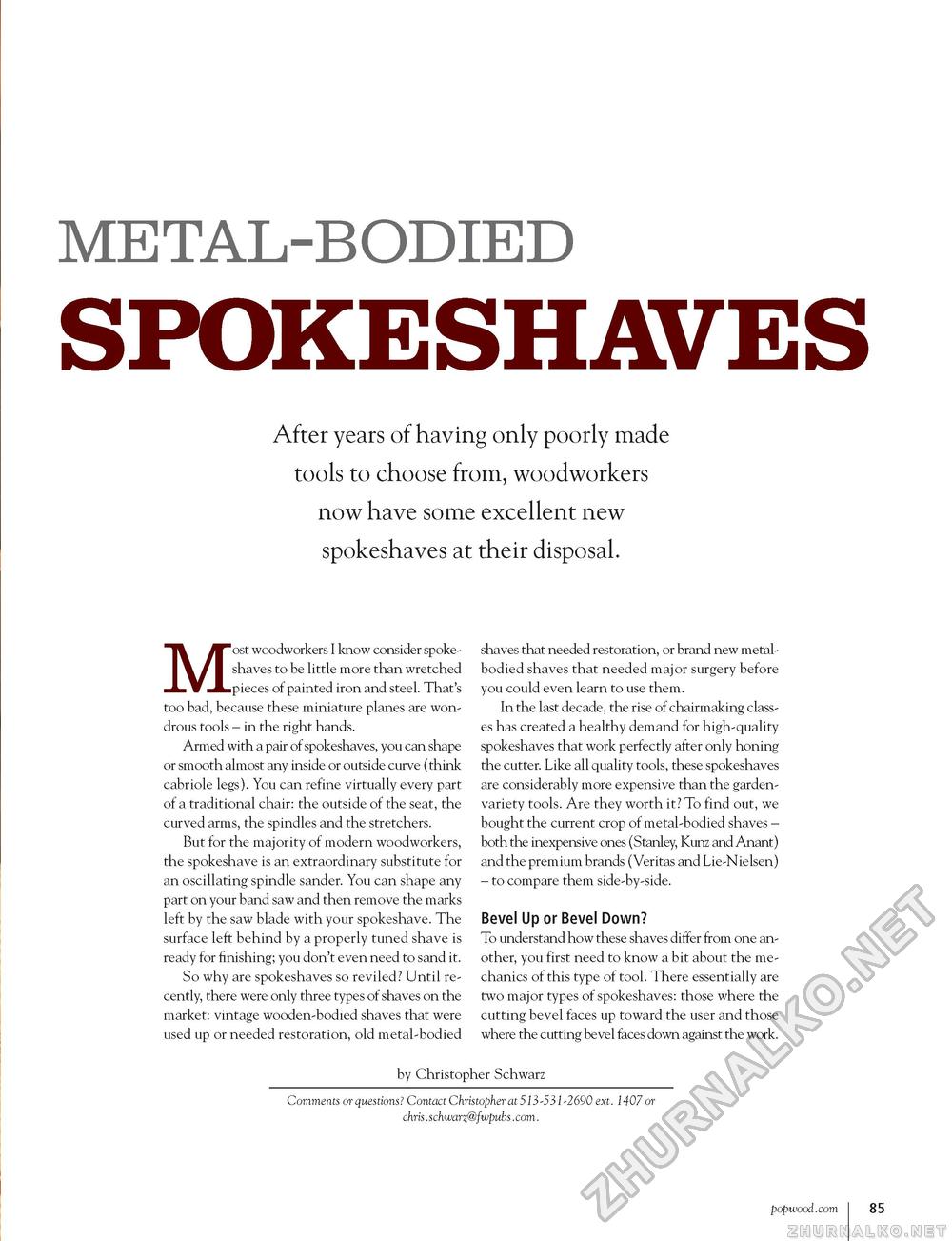Popular Woodworking 2004-04 № 140, страница 88
METAL-BODIED SPOKESHAVES After years of having only poorly made tools to choose from, woodworkers now have some excellent new spokeshaves at their disposal. Most woodworkers I know consider spoke-shaves to be little more than wretched pieces of painted iron and steel. That's too bad, because these miniature planes are wondrous tools - in the right hands. Armed with a pair of spokeshaves, you can shape or smooth almost any inside or outside curve (think cabriole legs). You can refine virtually every part of a traditional chair: the outside of the seat, the curved arms, the spindles and the stretchers. But for the majority of modern woodworkers, the spokeshave is an extraordinary substitute for an oscillating spindle sander. You can shape any part on your band saw and then remove the marks left by the saw blade with your spokeshave. The surface left behind by a properly tuned shave is ready for finishing; you don't even need to sand it. So why are spokeshaves so reviled? Until recently, there were only three types of shaves on the market: vintage wooden-bodied shaves that were used up or needed restoration, old metal-bodied shaves that needed restoration, or brand new metal-bodied shaves that needed major surgery before you could even learn to use them. In the last decade, the rise of chairmaking classes has created a healthy demand for high-quality spokeshaves that work perfectly after only honing the cutter. Like all quality tools, these spokeshaves are considerably more expensive than the garden-variety tools. Are they worth it? To find out, we bought the current crop of metal-bodied shaves -both the inexpensive ones (Stanley, Kunz and Anant) and the premium brands (Veritas and Lie-Nielsen) - to compare them side-by-side. Bevel Up or Bevel Down? To understand how these shaves differ from one another, you first need to know a bit about the mechanics of this type of tool. There essentially are two major types of spokeshaves: those where the cutting bevel faces up toward the user and those where the cutting bevel faces down against the work. by Christopher Schwarz Comments or questions? Contact Christopher at 513-531-2690 ext. 1407 or chris.schwarz@fwpubs.com. popwood.com 85 |








